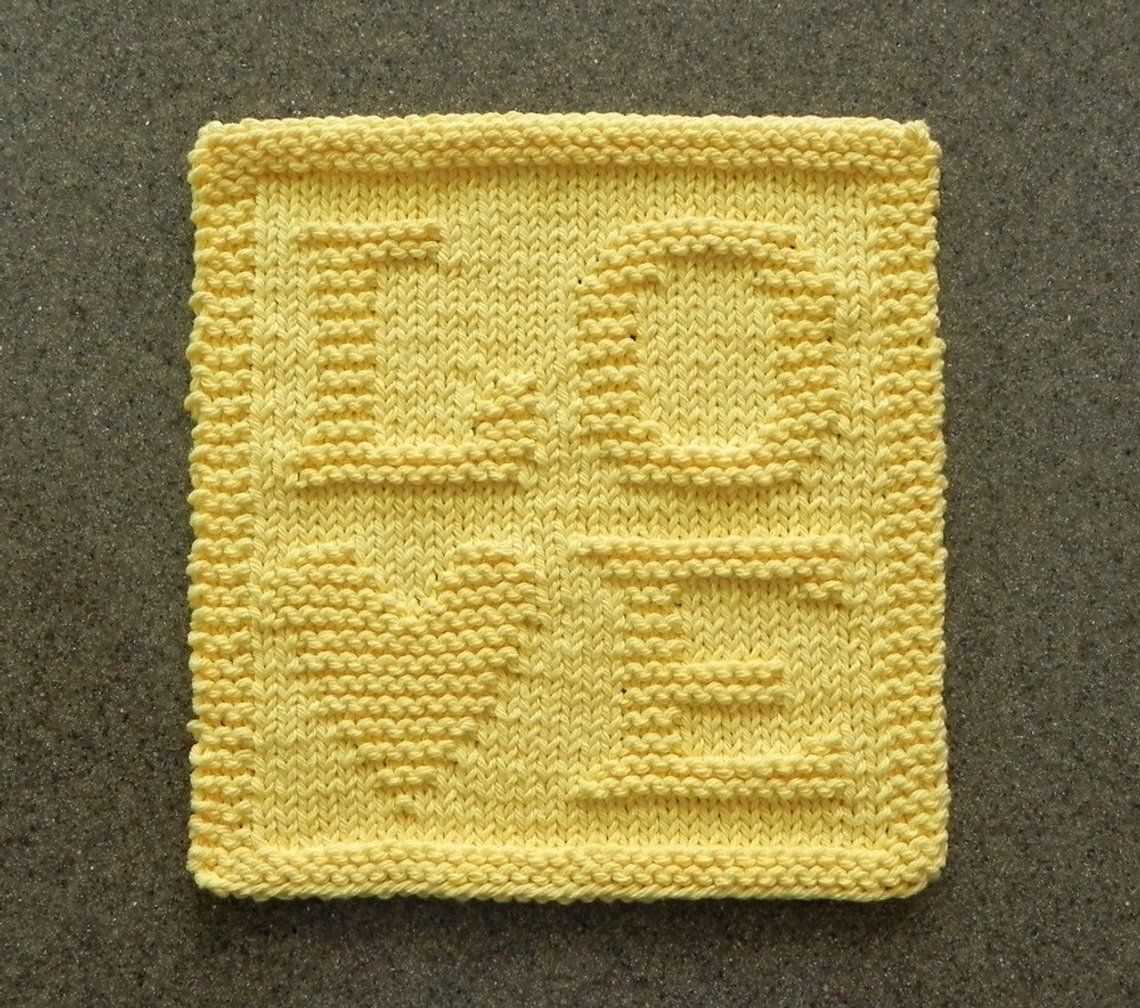
Knitted dish cloths are a popular choice for many knitters. They are quick and easy to make, and they make a great addition to any kitchen. Whether you’re a beginner knitter or an experienced one, a knitted dish cloth can be a fun and relaxing project to work on.
Knitted dish cloths are not only practical, but they can also add a touch of style to your kitchen. With the wide variety of yarns and patterns available, you can create dish cloths in different colors and designs to match your kitchen decor. Plus, they make great gifts for family and friends!
This article will provide you with a simple and easy-to-follow knitted dish cloth pattern. We’ll walk you through the steps, from choosing your yarn to finishing your dish cloth. So grab your knitting needles and let’s get started!
What is a Knitted Dish Cloth?
A knitted dish cloth, also known as a dish rag or dish towel, is a small piece of cloth that is used for various cleaning tasks in the kitchen. It is usually made from cotton yarn or other absorbent materials, and is designed to be durable and easy to wash.
These dish cloths are commonly used for washing dishes, wiping countertops, and cleaning kitchen utensils. They can also be used for other household cleaning tasks, such as dusting or wiping down surfaces. The knitted texture of the dish cloth helps to create friction, making it more effective at removing stubborn stains and dried-on food.
Knitted dish cloths are a popular choice for those who prefer using reusable and environmentally-friendly cleaning tools. They can be washed and dried in a washing machine, and are often more durable than disposable paper towels or sponges. Additionally, they can be easily customized with different patterns and colors, making them a fun and personalized addition to any kitchen.
Benefits of Using Knitted Dish Cloths
Knitted dish cloths are a popular choice for many households due to their various benefits. These small and versatile cloths are not only great for cleaning dishes, but they also have several advantages over traditional dish cloths.
Durability: Knitted dish cloths are typically made with durable materials, such as cotton, that can withstand repeated use and washing. This ensures that they last longer compared to disposable dish cloths, saving you money in the long run.
Environmentally Friendly:
- Disposable paper towels and synthetic dish cloths contribute to environmental waste. Knitted dish cloths, on the other hand, are reusable and can be washed instead of being thrown away after each use.
- By using knitted dish cloths, you can reduce your carbon footprint and help protect the environment.
Cleaning Power:
Knitted dish cloths have a textured surface that aids in scrubbing away stubborn food particles and stains. The raised patterns in the cloth provide extra scrubbing power, making it easier to remove grime from dishes.
Gentle on Surfaces:
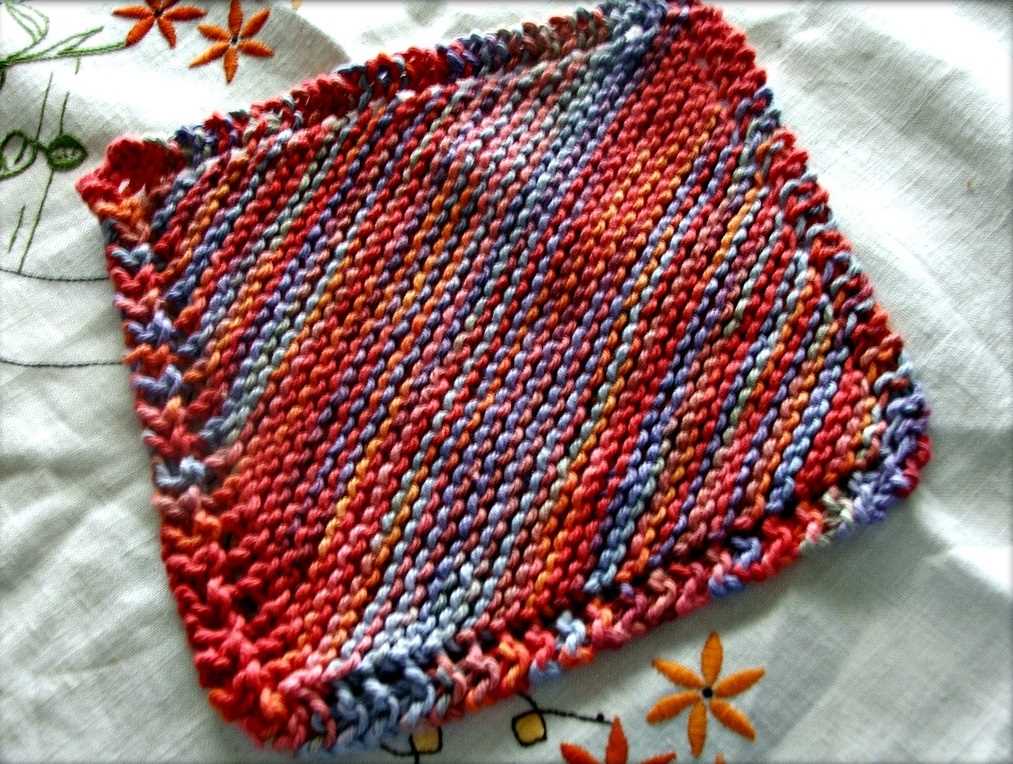
Unlike some abrasive scrubbers, knitted dish cloths are gentle on surfaces and do not scratch or damage delicate cookware or dishes. They are suitable for use on various materials, including glass, stainless steel, and non-stick surfaces.
Multi-Purpose Usage:
- Knitted dish cloths can be used for more than just washing dishes. They can be utilized for cleaning countertops, wiping down kitchen appliances, and even as pot holders or trivets.
- Their versatility makes them an essential tool in any kitchen.
Easy to Clean and Maintain:
Knitted dish cloths can be easily cleaned either by hand or in the washing machine. Simply toss them in with the rest of your laundry and they come out clean and ready to use again. They can also be air-dried or tumble-dried for added convenience.
In conclusion, knitted dish cloths offer durability, environmental friendliness, effective cleaning power, gentle usage on surfaces, versatility, and easy maintenance. By using these cloths in your kitchen, you can enjoy the benefits they provide while also reducing waste and saving money.
Choosing the Right Yarn for Knitted Dish Cloths
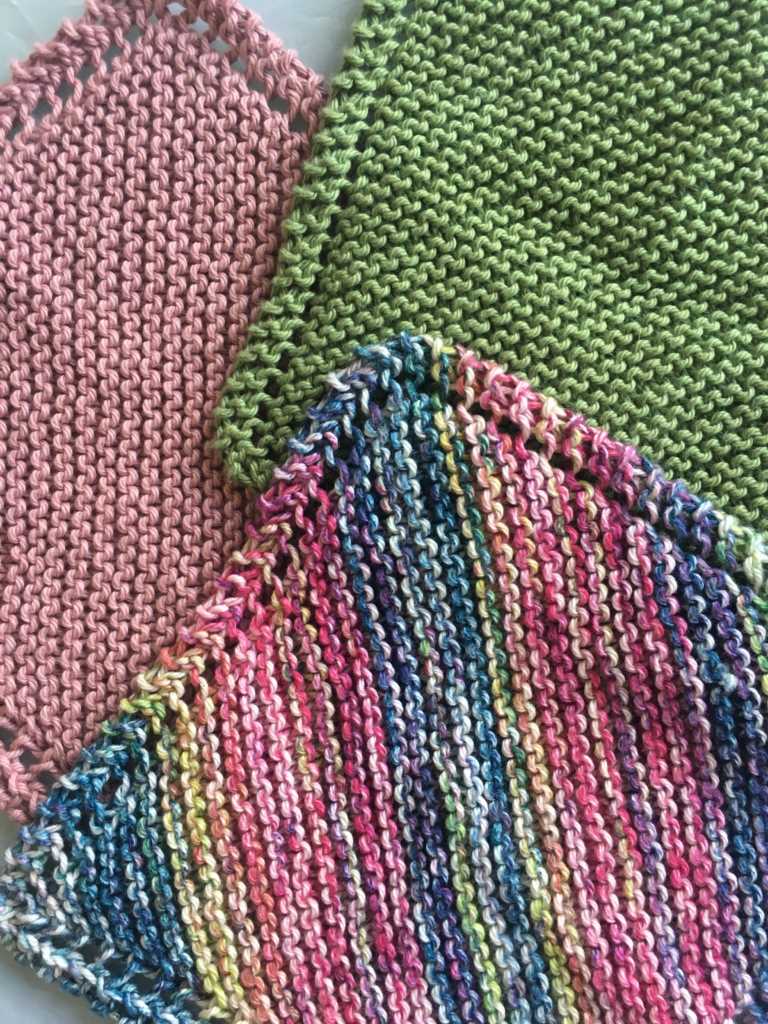
When it comes to making knitted dish cloths, choosing the right yarn is an important decision. The type of yarn you select will determine the final look, feel, and functionality of your dish cloths. Here are some key factors to consider when choosing yarn for your project.
Fiber Content
The fiber content of the yarn you choose will greatly impact the performance of your knitted dish cloths. Cotton yarn is a popular choice for dish cloths because it is absorbent, durable, and easy to care for. It is also hypoallergenic, making it a great option for people with sensitive skin. Other natural fibers, such as bamboo and linen, can also be suitable choices. They offer similar qualities to cotton and can add a unique texture to your dish cloths.
Weight and Texture
The weight and texture of the yarn will affect the overall appearance and functionality of your dish cloths. Lighter weight yarns, such as fingering or sport weight, are ideal for creating delicate and lightweight dish cloths. They are also great for creating lacy or intricate patterns. On the other hand, heavier weight yarns, like worsted or bulky weight, will result in thicker and more absorbent dish cloths. The texture of the yarn, whether it’s smooth or textured, can also add visual interest to your dish cloths.
Color and Design
The color and design of the yarn can play a big role in the overall aesthetic of your knitted dish cloths. Solid, variegated, or self-striping yarns can all create different effects and patterns. Solid colors are classic and can match any kitchen decor, while variegated or self-striping yarns can add some visual interest and create unique designs. Consider the recipient’s preferences and the overall look you want to achieve when selecting the color and design of your yarn.
Conclusion
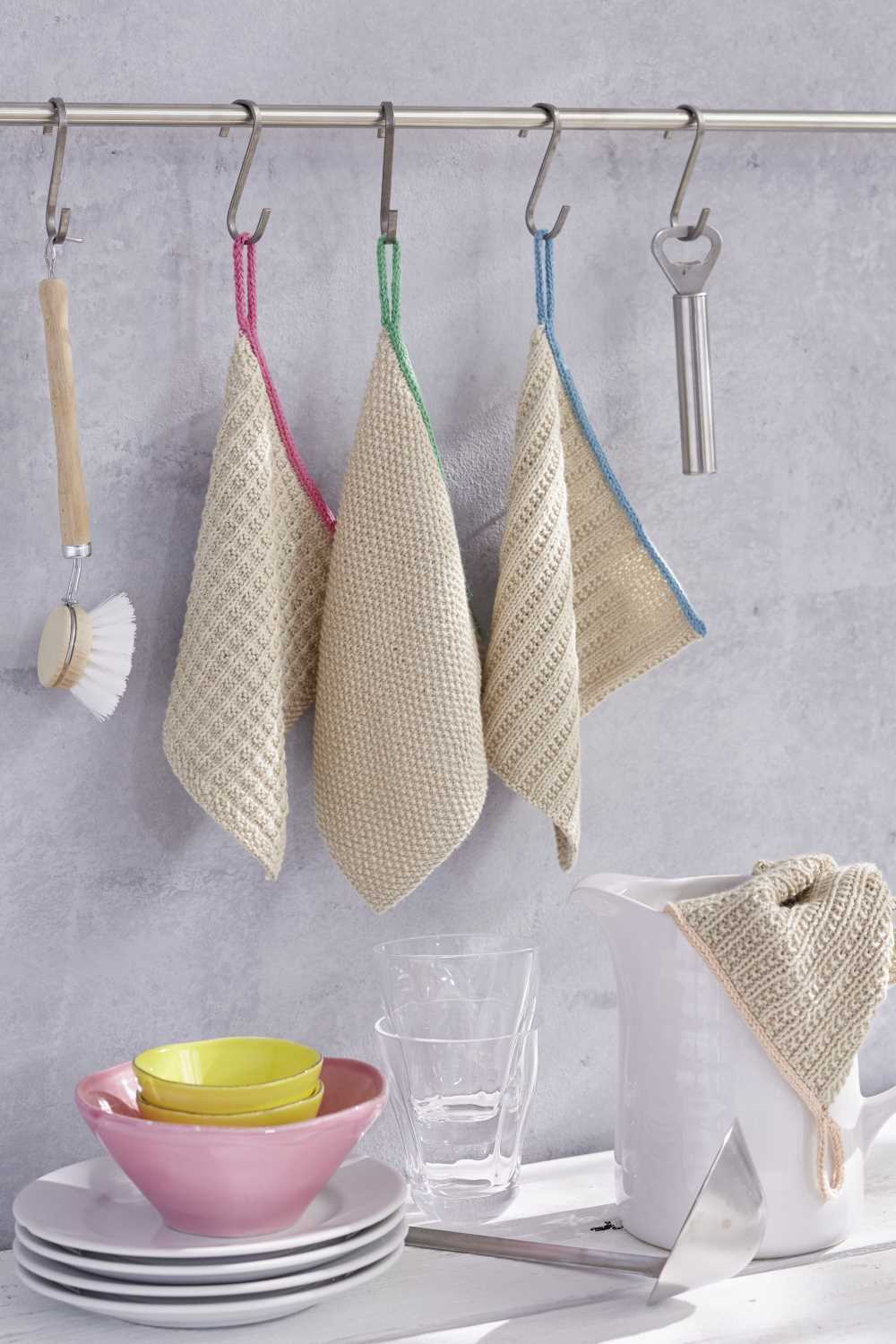
Choosing the right yarn for your knitted dish cloths is essential to create functional and visually appealing results. Consider the fiber content, weight and texture, as well as the color and design of the yarn to ensure that it meets your needs and preferences. With the right yarn, your knitted dish cloths will not only be useful in the kitchen but also make great gifts for family and friends.
Essential Knitting Tools for Making Dish Cloths
If you’re interested in knitting dish cloths, having the right tools can make all the difference in your knitting experience. Here are some essential knitting tools that you’ll need to create beautiful and functional dish cloths.
1. Knitting Needles
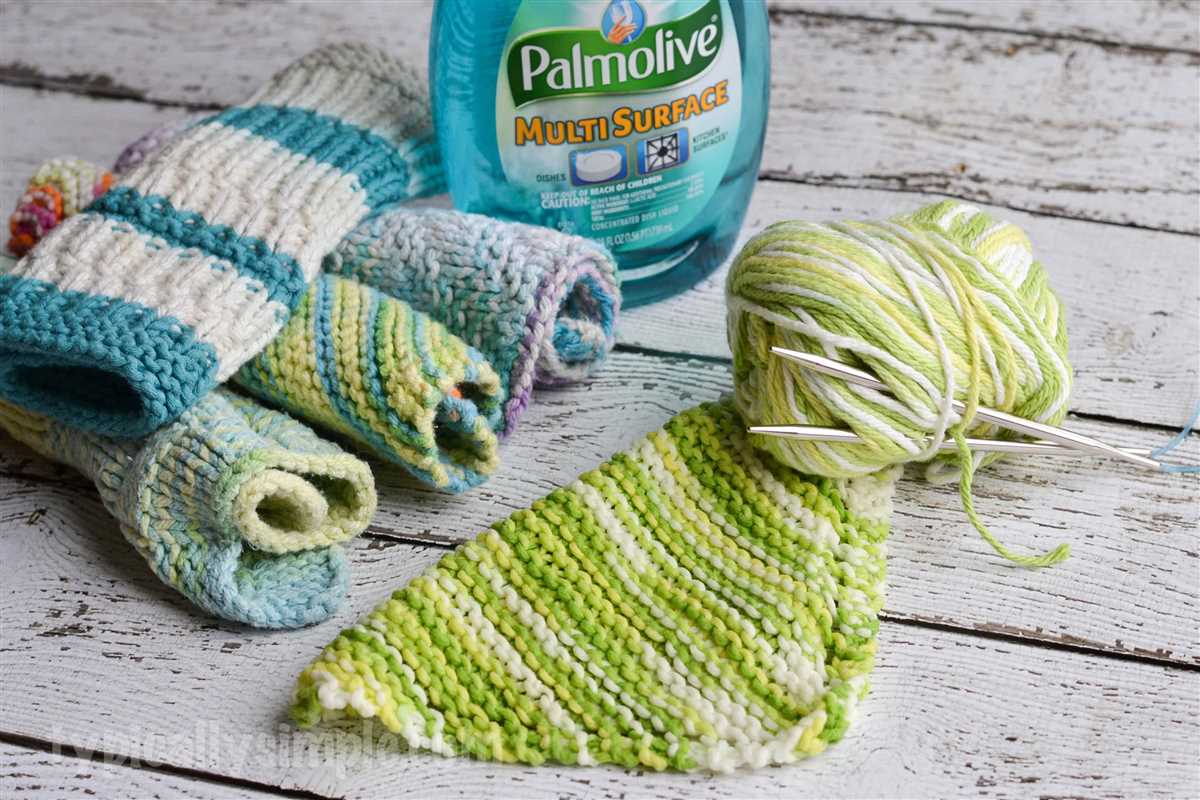
The most important tool you’ll need for knitting dish cloths is a set of knitting needles. You can choose between straight needles or circular needles, depending on your knitting preference. Make sure to choose needles that are the appropriate size for your yarn and pattern.
2. Yarn
Of course, you can’t knit without yarn! For dish cloths, it’s best to choose a yarn that is absorbent and durable, such as cotton or bamboo. There are many different colors and types of yarn available, so you can get creative with your dish cloth designs.
3. Stitch Markers
Stitch markers are essential for keeping track of your stitches, especially if you’re working on a pattern with multiple stitch repeats. They can help you easily identify stitch patterns and make sure your dish cloth turns out just right.
4. Tapestry Needle
After you’ve finished knitting your dish cloth, you’ll need a tapestry needle to weave in the loose ends and sew any seams together. A tapestry needle with a large eye is best for weaving in thicker yarns.
5. Scissors
No knitting project is complete without a pair of scissors. You’ll need them to cut your yarn and trim any excess ends. Make sure to have a pair of sharp scissors on hand for precise cutting.
With these essential knitting tools, you’ll be well-equipped to create beautiful and functional dish cloths. Whether you’re a beginner or an experienced knitter, these tools will help you achieve professional-looking results.
Beginner-Friendly Knitted Dish Cloth Patterns
If you’re new to knitting or looking for a simple project to practice your skills, knitted dish cloth patterns are a great place to start. These patterns are beginner-friendly, offering a chance to learn basic knitting techniques while creating a functional and attractive item for your kitchen.
Materials: To make a knitted dish cloth, you’ll need a pair of knitting needles (size 7 or 8), medium weight cotton yarn, and a tapestry needle for weaving in ends.
Pattern 1: Garter Stitch Dish Cloth
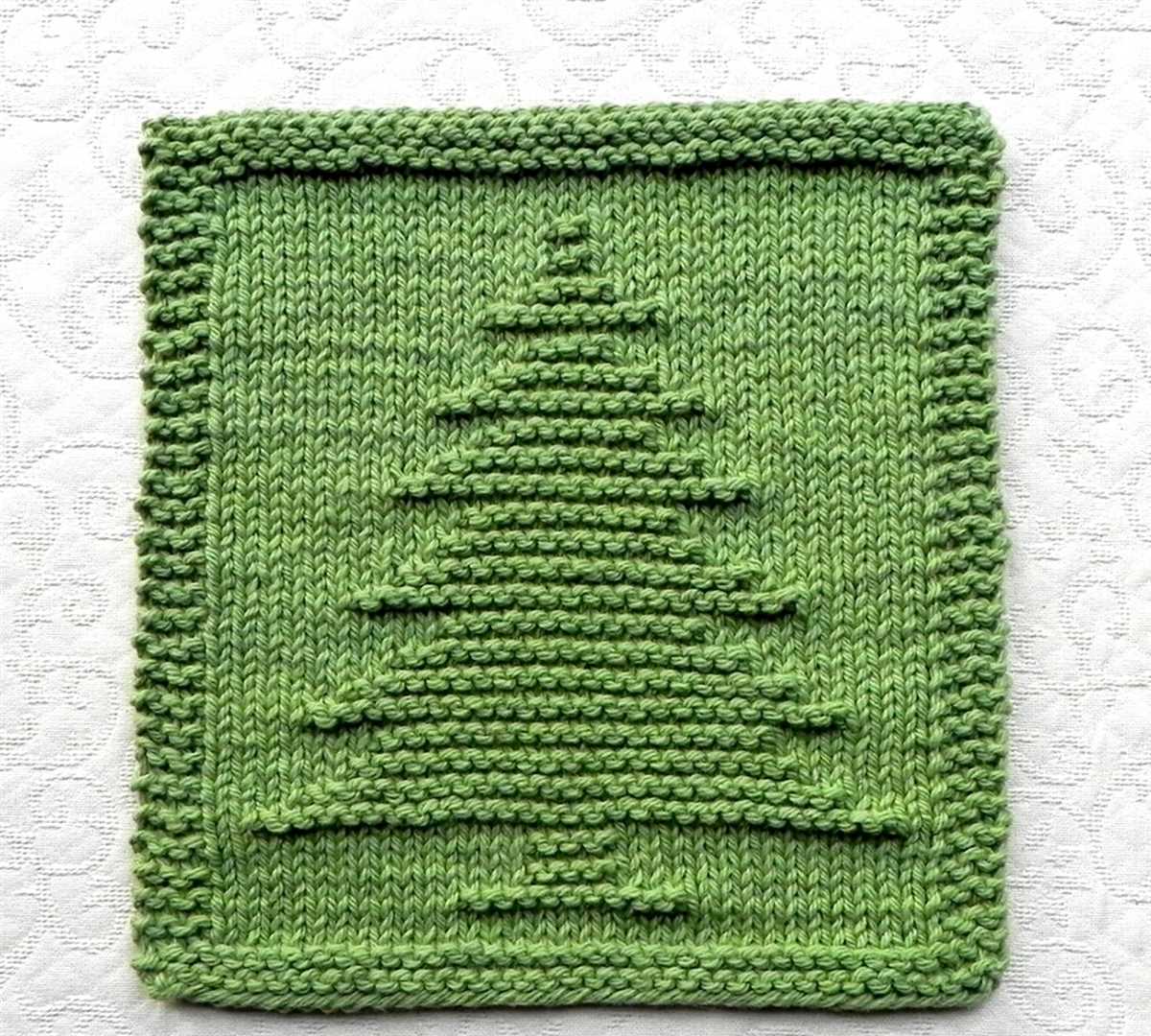
This pattern is ideal for absolute beginners. The garter stitch is the simplest knitting stitch, making it easy to create a uniform and textured cloth. To make this dish cloth, cast on 40 stitches and knit every row until the cloth is square, finishing with a few rows of garter stitch. Bind off and weave in ends.
Pattern 2: Seed Stitch Dish Cloth
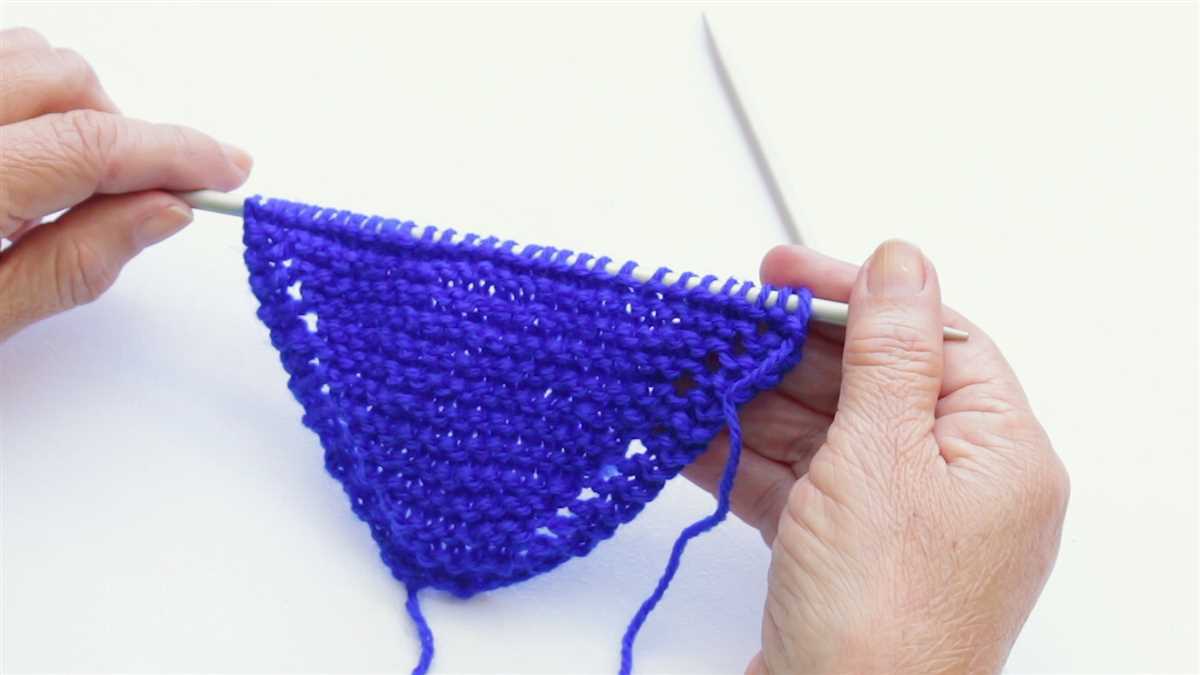
The seed stitch is another easy and versatile stitch pattern that creates a lovely texture. To make this dish cloth, cast on 32 stitches and alternate between knitting and purling every row. Repeat this pattern until the cloth is square, finishing with a few rows of seed stitch. Bind off and weave in ends.
Pattern 3: Diagonal Dish Cloth
The diagonal dish cloth is a slightly more advanced beginner pattern, but still achievable for those who have a few basic knitting skills. To make this dish cloth, start with three stitches and increase one stitch at the beginning of every row until you reach your desired width. Then, decrease one stitch at the beginning of every row until you have three stitches remaining. Bind off and weave in ends.
These are just a few examples of beginner-friendly knitted dish cloth patterns. They provide an opportunity to practice basic stitches and techniques, while also creating a useful item for your home. Get started on your knitting journey and enjoy the satisfaction of creating something beautiful and functional with your own hands.
Advanced Knitted Dish Cloth Patterns
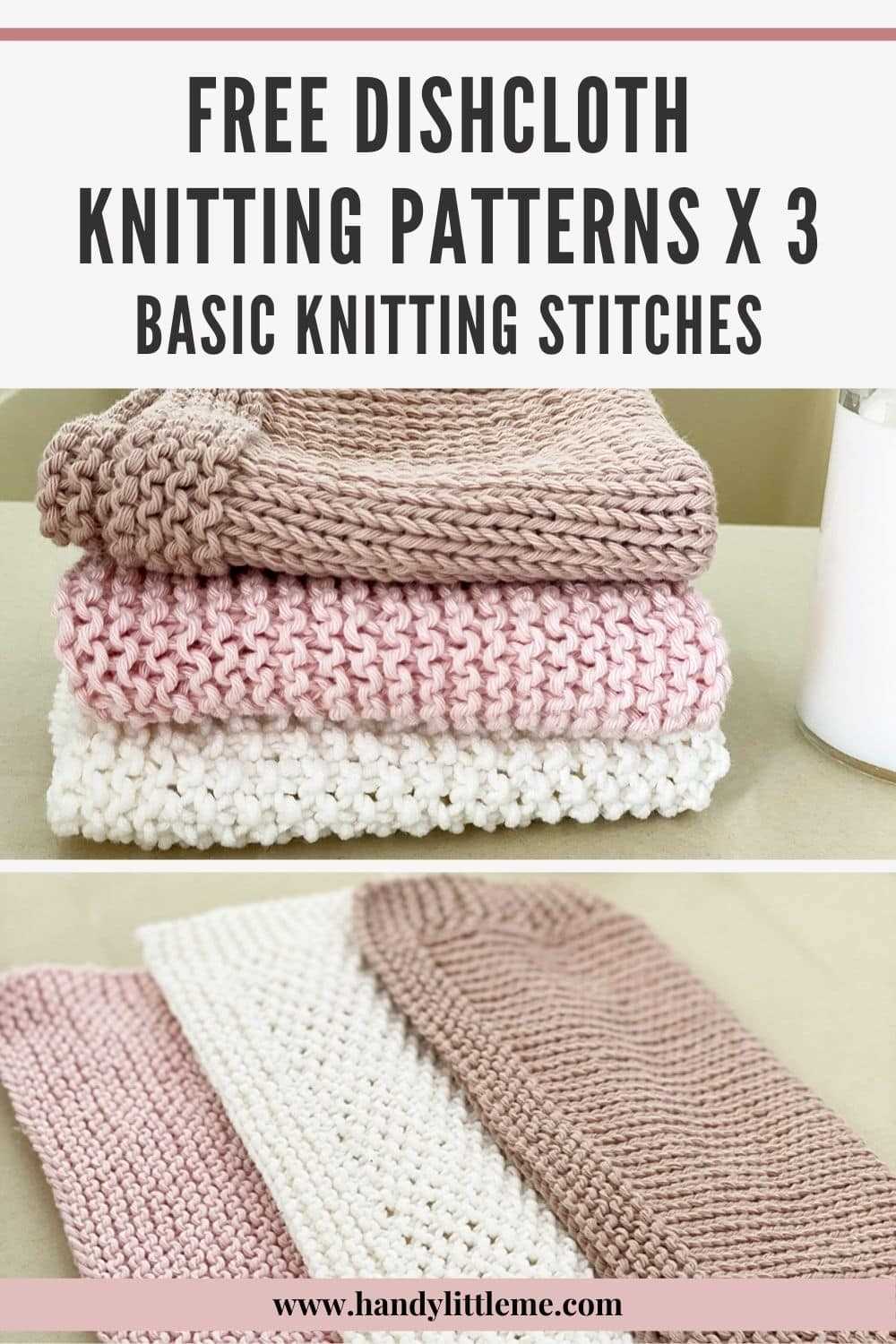
If you’re an experienced knitter looking for a challenge or simply want to expand your knitting skills, advanced knitted dish cloth patterns are a great way to do so. These patterns often incorporate complex stitch patterns or unique shaping techniques to create beautiful and functional dish cloths.
One advanced pattern is the “Lace Dish Cloth”, which features intricate lace motifs and delicate openwork. Knitted with fine yarn and smaller needles, this dish cloth is not only practical but also adds an elegant touch to your kitchen. The lace pattern requires concentration and attention to detail, making it a rewarding project for intermediate to advanced knitters.
Key features:
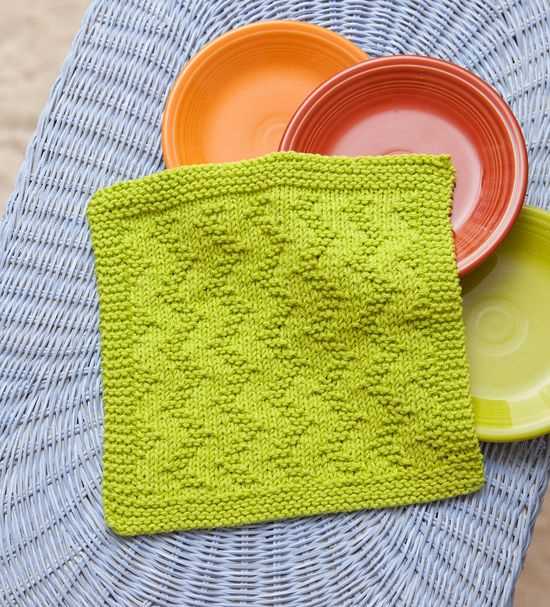
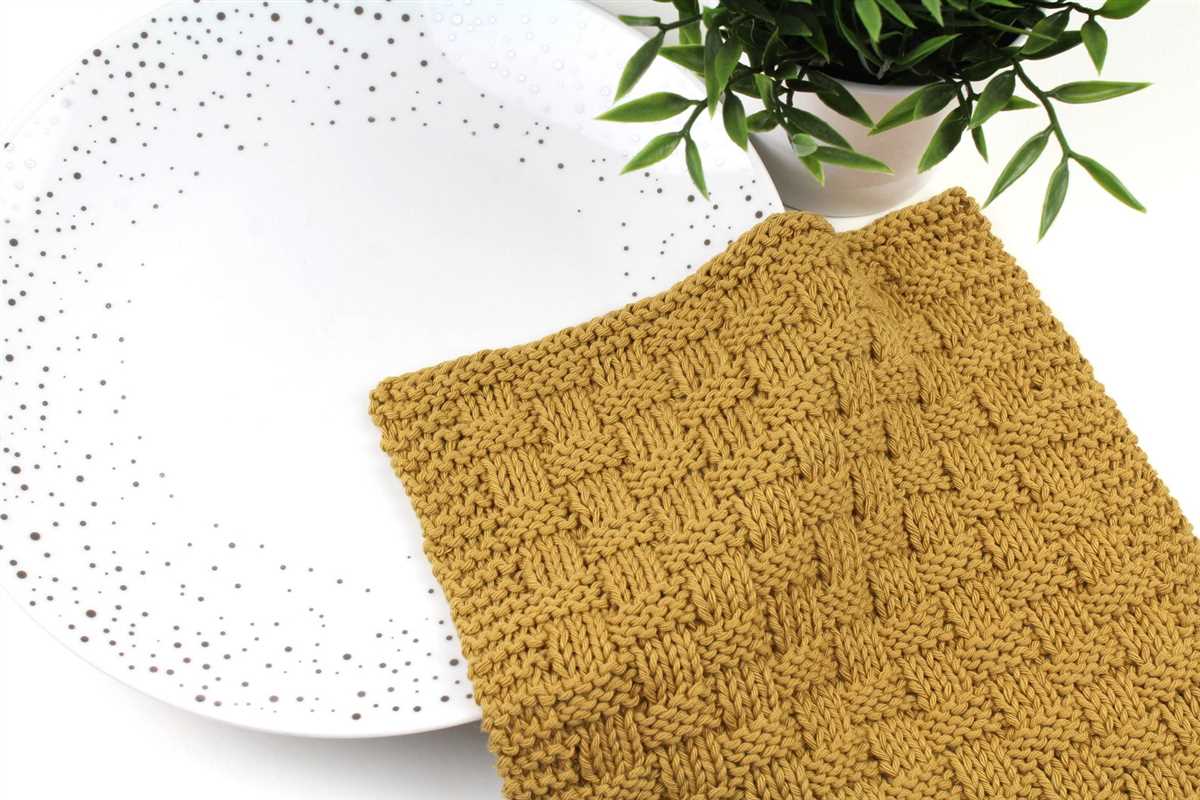
- Intricate lace motifs
- Delicate openwork
- Requires fine yarn and smaller needles
- Challenging stitch pattern
Another advanced pattern is the “Cable Dish Cloth”. This pattern showcases various cable stitches, creating a textured and visually appealing cloth. Cables can be challenging for beginners, as they involve cross-over stitches and manipulating the knitting needles in specific ways. However, with practice and patience, knitters can create stunning cable dish cloths that are not only great for washing dishes but also make lovely gifts.
Key features:
- Incorporates different cable stitch patterns
- Textured and visually appealing design
- Requires cable needle for manipulating stitches
- Great for gifts
If you’re up for a unique challenge, the “Entrelac Dish Cloth” is a pattern worth trying. This technique creates a fabric with a woven appearance, resembling a basketweave. Each rectangular section of the cloth is worked individually in a diagonal direction and then joined together to form the final dish cloth. The entrelac technique may seem daunting at first, but with clear instructions and practice, you can create a stunning dish cloth that will impress everyone in your kitchen.
Key features:
- Unique entrelac technique
- Woven appearance resembling basketweave
- Requires working rectangular sections individually
- Joining sections to form the final dish cloth
Tips and Tricks for Knitting Dish Cloths
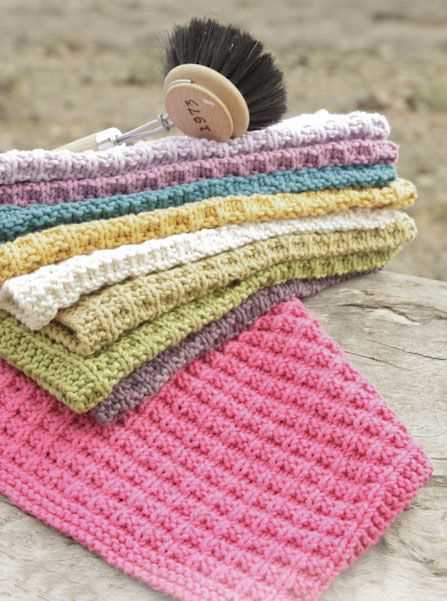
Knitting dish cloths can be a fun and rewarding project. Not only are they practical for everyday use, but they also make great gifts. Whether you’re a beginner or an experienced knitter, here are some tips and tricks to help you create beautiful and functional dish cloths.
Choose the Right Yarn
When it comes to knitting dish cloths, it’s important to choose the right yarn. Look for yarn that is durable and absorbent, such as cotton or linen. Avoid using yarns that are too bulky or stretchy, as they may not hold up well to regular use. It’s also a good idea to opt for colors that won’t show stains easily. Neutrals or darker shades are typically a safe choice.
Select the Right Needle Size
The needle size you choose can greatly affect the outcome of your dish cloth. Generally, a smaller needle size, such as a US 6 or 7, will result in a tighter and denser fabric, which is ideal for dish cloths. However, if you prefer a more open and airy texture, you can go up a needle size. Just keep in mind that a looser fabric may be less durable and may not hold up as well over time.
Practice Basic Stitch Patterns
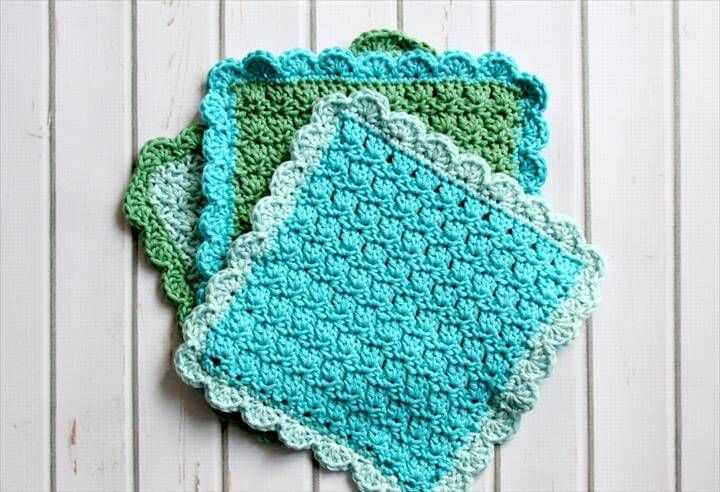
Most dish cloths are knitted using basic stitch patterns, such as garter stitch or seed stitch. These simple patterns create a textured fabric that is both attractive and functional. If you’re new to knitting, it’s a good idea to practice these stitch patterns before starting your dish cloth. This will help you get comfortable with the techniques and ensure that your finished project turns out well.
Consider Adding a Border
Add an extra touch of style to your dish cloth by adding a border. A simple garter stitch or seed stitch border can enhance the overall look of the cloth and prevent the edges from curling. You can also experiment with other border patterns, such as a ribbed or lace border, for a more decorative effect. Just make sure to keep the border stitches loose enough, so they don’t pull in and distort the shape of the cloth.
Block and Finish Your Dish Cloths
After you’ve finished knitting your dish cloth, it’s important to block and finish it properly. Blocking involves gently stretching and shaping the fabric to even out the stitches and improve the drape. To block your dish cloth, wet it with cold water and lay it flat on a towel. Gently stretch and shape the cloth to your desired dimensions, then let it dry completely. Finally, weave in any loose ends and trim the yarn, ensuring that the ends are secure and won’t come undone with use.
By following these tips and tricks, you’ll be able to knit dish cloths that are not only functional but also beautiful. Enjoy the process of knitting and take pride in your handmade creations!
Common Mistakes to Avoid When Knitting Dish Cloths
Knitting dish cloths can be a fun and rewarding project, but there are some common mistakes that beginners often make. By avoiding these mistakes, you can ensure that your dish cloths turn out beautifully and serve their purpose effectively.
1. Using the wrong type of yarn: It’s important to choose a yarn that is suitable for dish cloths, as they will be exposed to water and frequent use. Avoid using yarn that is too delicate or prone to shedding, as it may not hold up well over time. Look for cotton or acrylic yarns that are durable and absorbent.
2. Not checking gauge: Gauge refers to the number of stitches and rows per inch of knitted fabric. It’s crucial to check the gauge specified in the pattern before you start knitting. If your gauge doesn’t match, the dish cloth may end up too big or too small. Take the time to swatch and adjust your needle size if necessary.
3. Ignoring pattern instructions: Dish cloth patterns usually have specific instructions for stitch patterns and shaping. It’s important to read and follow these instructions carefully to achieve the desired result. Skipping or misinterpreting pattern instructions can lead to mistakes and a dish cloth that doesn’t look as intended.
4. Not using stitch markers: Stitch markers are essential tools that help you keep track of your progress and maintain the correct stitch count. By placing stitch markers at important points in the pattern, such as the beginning of a round or a specific stitch repeat, you can easily spot any mistakes and fix them before they become more difficult to correct.
5. Not blocking the finished dish cloth: Blocking is the process of shaping and setting the knitted fabric by wetting it and allowing it to dry in the desired shape. Dish cloths can greatly benefit from blocking, as it helps to even out the stitches and improve the overall appearance. Skipping this step may result in a dish cloth that looks uneven or puckered.
By avoiding these common mistakes and paying attention to the details, you can create beautiful and functional dish cloths that will be a joy to use in your kitchen.
Caring for Your Knitted Dish Cloths
Knitted dish cloths are not only practical and useful in the kitchen, but they can also add a touch of comfort and charm to your daily tasks. However, in order to keep them in good condition and ensure their longevity, it’s important to give them proper care and maintenance. Here are some tips to help you care for your knitted dish cloths:
1. Hand wash with mild detergent:
To protect the delicate fibers of your knitted dish cloths, it’s recommended to hand wash them using a mild detergent. Fill a basin or sink with lukewarm water and add a small amount of gentle detergent. Gently agitate the dish cloths in the soapy water, focusing on any areas that may have stains or spills. Rinse them thoroughly with clean water and gently squeeze out the excess water. Avoid wringing or twisting the dish cloths, as this can cause them to lose their shape.
2. Air dry flat:
After washing, it’s best to air dry your knitted dish cloths flat to maintain their shape and prevent any stretching or distortion. Lay them on a clean towel or drying rack, making sure they are spread out evenly and not overlapping. Avoid hanging them to dry, as this can cause them to stretch and lose their shape. Allow them to air dry completely before using or storing them.
3. Avoid harsh chemicals and bleach:
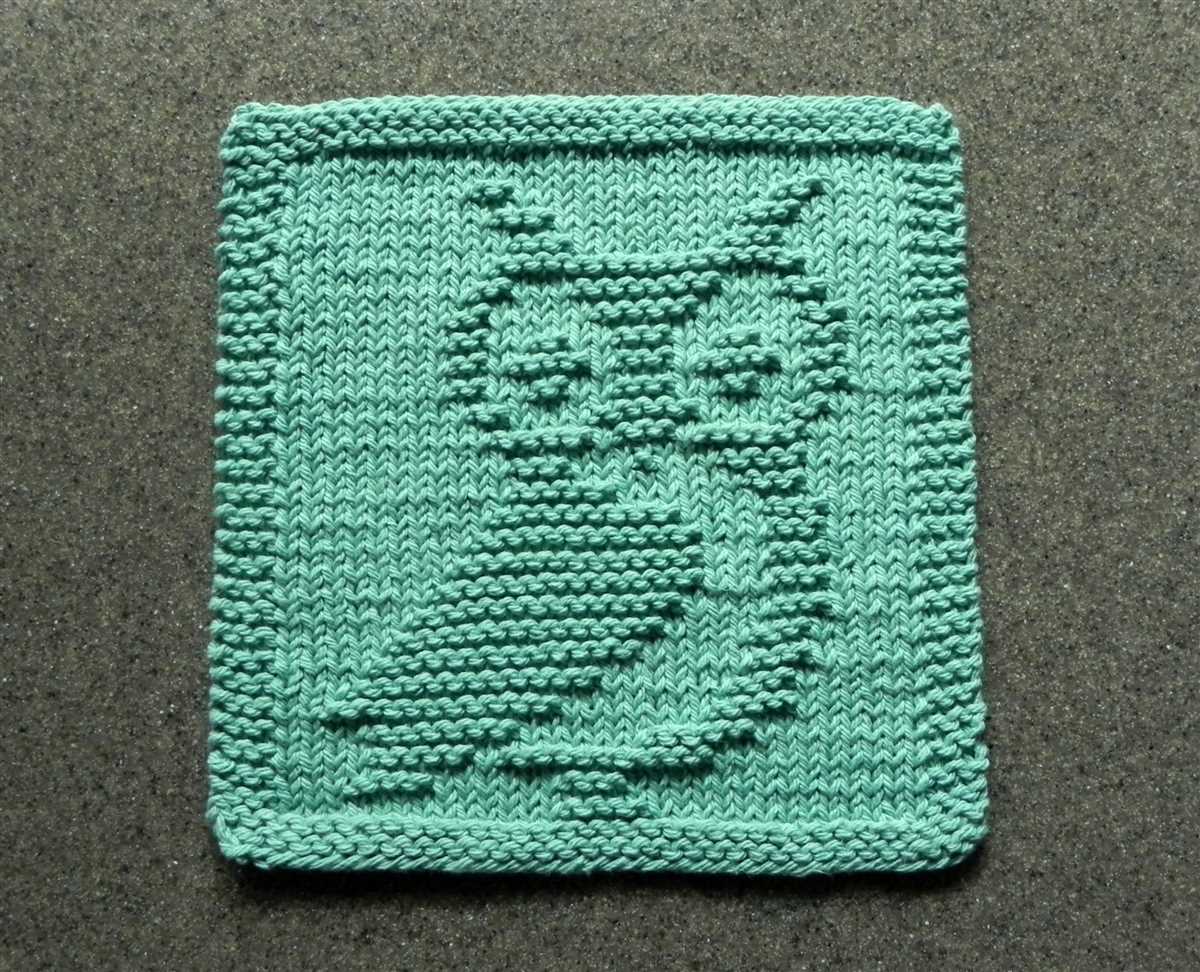
When caring for your knitted dish cloths, it’s important to avoid using harsh chemicals or bleach, as these can damage the fibers and cause them to become brittle or break. Stick to mild detergents specifically designed for delicate fabrics, and avoid using any strong cleaning agents or bleach. If you need to remove stubborn stains, try using a stain remover specifically formulated for delicate fabrics, following the product’s instructions carefully.
4. Store them properly:
To prolong the life of your knitted dish cloths, it’s important to store them properly when not in use. Make sure they are completely dry before storing them to prevent any moisture or mildew. Fold them neatly or roll them up and place them in a clean, dry drawer or container. Avoid storing them in a damp or humid environment, as this can promote mold or mildew growth.
By following these simple care instructions, you can ensure that your knitted dish cloths remain soft, absorbent, and beautiful, ready to assist you in your kitchen tasks for years to come.
Unique Designs and Patterns for Knitted Dish Cloths
If you’re looking for a creative way to make your kitchen stand out, knitted dish cloths are the perfect choice. These unique and practical items not only add a touch of charm to your kitchen, but they also serve a functional purpose. With a wide range of designs and patterns available, you’ll be able to find the perfect one to suit your style and needs.
One popular design for knitted dish cloths is the classic garter stitch pattern. This simple yet attractive pattern is suitable for both beginners and experienced knitters. The garter stitch creates a textured fabric that is perfect for scrubbing dishes or wiping countertops. You can experiment with different yarn colors to create a vibrant and eye-catching dish cloth that will brighten up your kitchen.
For those who prefer a more intricate design, the lace pattern is an excellent choice. Knitting a lace dish cloth requires more advanced skills, but the end result is well worth the effort. The delicate and intricate lacework adds an elegant touch to your kitchen decor. Choose a soft and lightweight yarn to create a dish cloth that feels luxurious to the touch.
If you’re feeling adventurous, you can try your hand at colorwork patterns. These patterns involve using multiple yarn colors to create stunning and intricate designs. Whether you prefer stripes, geometric shapes, or nature-inspired motifs, there is a colorwork pattern that will suit your taste. Knitted dish cloths in colorwork patterns make wonderful gifts or beautiful additions to your own kitchen.
No matter what design or pattern you choose, knitted dish cloths are a versatile and practical addition to any kitchen. Not only do they add a unique and personal touch to your space, but they also make dishwashing a little more enjoyable. Get creative with your knitting and create a collection of stunning dish cloths that will surely impress your guests.
Knitting Classes and Workshops for Dish Cloth Making
If you’re interested in knitting dish cloths and want to improve your skills, consider taking knitting classes or workshops focused specifically on dish cloth making. These classes offer a unique opportunity to learn from experienced knitters and refine your technique in a supportive and creative environment.
One of the benefits of attending knitting classes or workshops is the chance to learn new stitch patterns and techniques that can be used to create unique and beautiful dish cloths. In these classes, you’ll be guided through various knitting projects and taught different stitches that can be incorporated into your dish cloth designs. This not only expands your knitting repertoire but also allows you to experiment and personalize your dish cloths.
Many knitting classes and workshops for dish cloth making are offered at local yarn shops, community centers, and craft stores. These classes are usually taught by experienced knitters who have a passion for sharing their knowledge and love for knitting. They provide hands-on instruction and individualized attention to help you improve your knitting skills and troubleshoot any issues you may encounter.
In addition to learning new techniques, knitting classes and workshops also provide an opportunity to connect with other knitting enthusiasts. You’ll have the chance to meet like-minded individuals who share your love for knitting dish cloths and can offer support and inspiration. The sense of community and camaraderie fostered in these classes can be motivating and encouraging, and may even lead to lasting friendships.
Whether you’re a beginner looking to learn the basics of dish cloth knitting or an experienced knitter wanting to expand your skills, attending knitting classes or workshops dedicated to dish cloth making can be a rewarding experience. Not only will you acquire new techniques and patterns, but you’ll also have the opportunity to connect with other knitters and be part of a supportive and creative community.
Knitted Dish Cloths as Eco-Friendly Alternatives
The use of knitted dish cloths as an eco-friendly alternative to disposable sponges and paper towels is gaining popularity. These cloths are not only practical for everyday use in the kitchen, but they also have a positive impact on the environment. Here, we will discuss the key benefits of using knitted dish cloths and why they are a sustainable choice for your household.
1. Reduction in waste: By using knitted dish cloths, you can significantly reduce the amount of waste generated from disposable cleaning products. Unlike sponges and paper towels, which are often thrown away after a single use and end up in landfills, knitted dish cloths can be used multiple times. This helps in minimizing waste and promoting a more sustainable lifestyle.
2. Durability: Knitted dish cloths are known for their durability and long lifespan. Unlike disposable alternatives that tend to tear or wear out quickly, these cloths can withstand regular use and even machine washing. This means that you won’t have to constantly replace your cleaning materials, further reducing waste and saving money in the long run.
- They are reusable and can be washed and used again and again.
- They are easy to make and can be customized to fit your style and preferences.
- They provide gentle yet effective scrubbing power for cleaning dishes, countertops, and other surfaces.
- They are made from natural fibers, such as cotton or bamboo, which are biodegradable and renewable resources.
- They are versatile and can be used for various cleaning tasks in the kitchen and beyond.
In conclusion, knitted dish cloths offer a sustainable solution for your cleaning needs. By choosing to use them instead of disposable alternatives, you can contribute to reducing waste, saving money, and minimizing your environmental footprint. So why not give knitted dish cloths a try and make a positive impact on the planet?